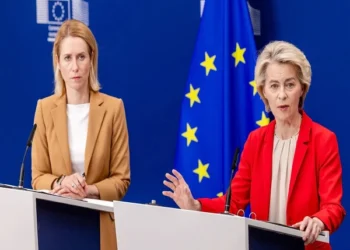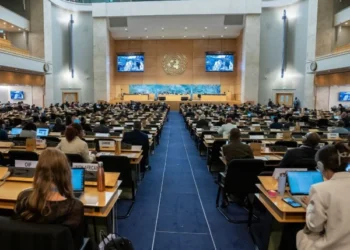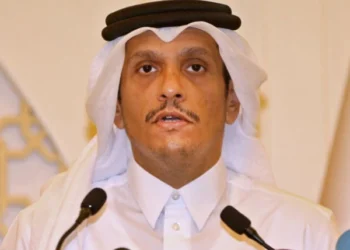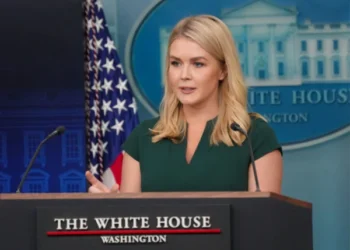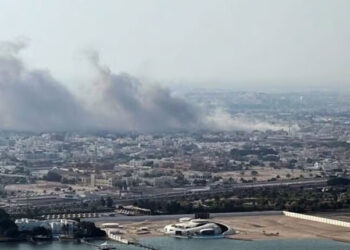Overview: Israeli Attack Targets Key Iranian Figures
According to a recent report published by British media citing Iranian state television, two prominent Iranian nuclear scientists have been martyred in an Israeli airstrike. The airstrike, part of Israel’s escalating confrontation with Iran, is believed to be a targeted operation aimed at weakening Iran’s nuclear capabilities and scientific leadership.
The two individuals killed in the airstrike have been identified as Dr. Fereydoun Abbasi, a former head of Iran’s Atomic Energy Organization (AEOI), and Mohammad Mehdi Tehranchi, who was serving as the president of Islamic Azad University in Tehran at the time of his death.
Dr. Fereydoun Abbasi: A Central Figure in Iran’s Nuclear Program
Former AEOI Chief and Assassination Survivor
Dr. Fereydoun Abbasi was one of Iran’s most high-profile nuclear physicists and had played a central role in Iran’s nuclear research and development efforts. As the former head of the Atomic Energy Organization of Iran (AEOI), Dr. Abbasi was deeply involved in Iran’s nuclear policy formulation, enrichment programs, and energy production strategies.
Notably, Dr. Abbasi survived an earlier assassination attempt in 2010 when he was attacked in Tehran by Israeli operatives, according to Iranian intelligence. The 2010 attack was part of a series of assassinations that targeted Iranian nuclear scientists, widely believed to be carried out by Mossad, the Israeli intelligence agency.
Following the failed attempt on his life, Dr. Abbasi became an even more symbolic figure within Iran’s scientific and political circles, known for his resilience and unwavering stance on nuclear development as a sovereign right.
Mohammad Mehdi Tehranchi: Academic and Nuclear Advocate
President of Islamic Azad University
The second scientist killed in the reported airstrike was Mohammad Mehdi Tehranchi, a physicist and academic administrator who served as the president of the Islamic Azad University, one of the largest university systems in Iran.
Tehranchi was not only an administrator but also an advocate for scientific innovation and nuclear research. He contributed to multiple academic publications and was a member of Iran’s Supreme Council of Cultural Revolution. His loss is being described as a significant blow to Iran’s academic and scientific community.
While Tehranchi was not publicly known for working directly with Iran’s nuclear weapons program, analysts believe his involvement in research and education in nuclear physics could have made him a strategic target.
Israel’s Longstanding Campaign Against Iranian Nuclear Scientists
A Pattern of Targeted Killings
The targeted killing of Iranian nuclear scientists is not a new phenomenon. Over the past two decades, Israel has consistently opposed Iran’s nuclear program, arguing that it is a cover for developing nuclear weapons—an allegation Iran denies, asserting that its nuclear activities are strictly for peaceful and civilian purposes.
Israeli intelligence operations have been tied to the assassinations of multiple Iranian scientists:
- 2007–2012: Several prominent scientists, including Majid Shahriari and Darioush Rezaeinejad, were assassinated.
- 2010: Dr. Fereydoun Abbasi survived an assassination attempt, while his colleague, Dr. Majid Shahriari, was killed.
- 2020: Dr. Mohsen Fakhrizadeh, widely regarded as the architect of Iran’s nuclear weapons program, was killed in a highly sophisticated ambush, reportedly carried out by Israel using a remote-controlled weapon.
The latest airstrike appears to be part of this covert campaign—aimed at slowing down or sabotaging Iran’s nuclear ambitions through decapitation of scientific leadership.
Regional and International Reactions
Iran: Outrage and Condemnation
Iranian authorities have yet to issue a comprehensive response, but state media and government officials have strongly condemned the attack, vowing revenge. In a televised statement, a senior commander of the Islamic Revolutionary Guard Corps (IRGC) called the attack an act of “state terrorism” and reiterated that the scientists’ deaths would not go unanswered.
The Iranian parliament has called for increased security around nuclear facilities and key personnel, as well as a re-evaluation of cooperation with international nuclear inspectors under the Joint Comprehensive Plan of Action (JCPOA).
Israel: No Official Comment
As is typical in such cases, Israel has neither confirmed nor denied responsibility for the killings. However, Israeli officials have repeatedly emphasized the country’s commitment to preventing Iran from obtaining nuclear weapons, stating that “all options are on the table.”
Global Powers Call for Restraint
The European Union, Russia, and China have expressed concern over the incident and urged both sides to avoid escalation. The United Nations Secretary-General António Guterres has called for restraint and emphasized the importance of dialogue and diplomacy.
Implications for the Iran Nuclear Deal (JCPOA)
A Setback for Diplomacy
The airstrike comes at a critical juncture, as efforts to revive the 2015 Iran Nuclear Deal—formally known as the JCPOA—have been stalled. The killing of key nuclear scientists may further derail negotiations between Iran and Western powers, particularly with Iran now viewing international diplomacy as vulnerable to sabotage and foreign aggression.
Many experts worry that such targeted killings undermine trust and push Iran further toward a hardline stance, reducing the chances of a peaceful resolution to the nuclear dispute.
Strategic Analysis: What Comes Next?
Increased Security Measures Inside Iran
Following this latest loss, Iran is expected to bolster physical security protocols around nuclear research facilities and personnel. This may include:
- Relocation of top scientists to secure underground locations.
- Enhanced surveillance and counter-intelligence operations.
- Restrictions on academic collaboration with foreign institutions.
Possible Retaliation Scenarios
Analysts believe Iran might respond in one or more of the following ways:
- Cyberattacks on Israeli infrastructure.
- Military action through its regional proxies such as Hezbollah in Lebanon, or militia groups in Iraq and Syria.
- Covert operations against Israeli or Western assets abroad.
However, any form of retaliation would also have to be calibrated to avoid full-scale conflict, especially given the increasing tensions already simmering across the Middle East.
Conclusion: A Blow to Science and Diplomacy
The deaths of Dr. Fereydoun Abbasi and Mohammad Mehdi Tehranchi represent not just a blow to Iran’s nuclear program but a setback for science, diplomacy, and regional stability. While Israel views its actions as a necessary measure to counter a perceived existential threat, Iran sees them as provocations that violate international law and justify a firm response.
With global powers watching closely, the path forward remains uncertain. Whether this incident leads to further confrontation or renewed efforts for peace will depend heavily on how the international community—and Iran—choose to respond in the coming days.

















